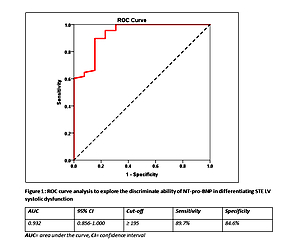Current issue
Archive
Manuscripts accepted
About the Journal
Editorial office
Editorial board
Section Editors
Abstracting and indexing
Subscription
Contact
Ethical standards and procedures
Most read articles
Instructions for authors
Article Processing Charge (APC)
Regulations of paying article processing charge (APC)
PEDIATRICS / RESEARCH PAPER
Detection of diabetic cardiomyopathy in Egyptian children and adolescents with longstanding Type 1 diabetes and evaluating the effect of α-tocopherol supplementation on cardiac functions after 1 year; a single center prospective study.
1
Diabetes, endocrine and Metabolism Pediatric Unit, Cairo University, Egypt
2
Diabetes, Endocrine and Metabolism Pediatric Unit, Cairo university, Egypt
3
Cardiology Pediatric unit, Children hospital, Cairo University,, Egypt
4
Department of Clinical and Chemical Pathology, Cairo University, Egypt
5
Laboratory of Diabetes research. Instituto de Investigaciones Sanitarias-Fundación Jiménez Díaz. Universidad Autónoma, Madrid, Spain, Spain
6
Diabetes, Endocrine and Metabolism Pediatric Unit, Cairo university, Egypt
Submission date: 2021-11-07
Final revision date: 2022-02-19
Acceptance date: 2022-03-06
Online publication date: 2022-04-04
Corresponding author
KEYWORDS
α-tocopherolN-terminal prohormone of brain natriuretic peptideDiabetic cardiomyopathyType 1 diabetesChildren and adolescentsSpeckle tracking echocardiography
TOPICS
ABSTRACT
Introduction:
Diabetic cardiomyopathy (DCM) is a serious complication that frequently occurs in patients with type 1 diabetes (T1D) necessitating early diagnosis. The aim of the current study was to detect subclinical DCM in Egyptian children and adolescents with T1D and evaluate the effect of antioxidants on myocardial dysfunction.
Material and methods:
The current prospective observational cohort study included 81 T1D patients (9-20 years old) with diabetes duration > 4 years compared to 50 age and sex matched non-diabetic controls. Serum N-terminal prohormone of brain natriuretic peptide (NT-proBNP) was assessed in addition to conventional echocardiography, tissue Doppler imaging (TDI) and speckle tracking echocardiography (STE). Patients with myocardial dysfunction were supplemented with vitamin E (α-tocopherol) as an antioxidant for 1 year, then follow up echocardiography was done.
Results:
NT-proBNP was elevated in 73 (90.1%) patients, 50.6% had left ventricular (LV) diastolic dysfunction, 14.8% had right ventricular (RV) diastolic dysfunction, 84% had LV systolic dysfunction and 91.4% had RV systolic dysfunction with statistically significant difference compared to controls. There was a significant negative correlation between LV global longitudinal strain (GLS) and NT-proBNP (p<0.001, r=-0.796). ROC curve analysis showed that NT-proBNP at a cut-off point ≥ 195 ng/ml detected LV systolic dysfunction function with 89.7% sensitivity and 84.6% specificity. Follow up after one year of α-tocopherol supplementation revealed significant improvement in LV systolic and diastolic functions as well as RV systolic dysfunction.
Conclusions:
NT-proBNP and non-conventional echocardiography were useful in early detection of subclinical cardiomyopathy in patients with T1D. Antioxidant treatment improved subclinical myocardial dysfunction in T1D patients.
Diabetic cardiomyopathy (DCM) is a serious complication that frequently occurs in patients with type 1 diabetes (T1D) necessitating early diagnosis. The aim of the current study was to detect subclinical DCM in Egyptian children and adolescents with T1D and evaluate the effect of antioxidants on myocardial dysfunction.
Material and methods:
The current prospective observational cohort study included 81 T1D patients (9-20 years old) with diabetes duration > 4 years compared to 50 age and sex matched non-diabetic controls. Serum N-terminal prohormone of brain natriuretic peptide (NT-proBNP) was assessed in addition to conventional echocardiography, tissue Doppler imaging (TDI) and speckle tracking echocardiography (STE). Patients with myocardial dysfunction were supplemented with vitamin E (α-tocopherol) as an antioxidant for 1 year, then follow up echocardiography was done.
Results:
NT-proBNP was elevated in 73 (90.1%) patients, 50.6% had left ventricular (LV) diastolic dysfunction, 14.8% had right ventricular (RV) diastolic dysfunction, 84% had LV systolic dysfunction and 91.4% had RV systolic dysfunction with statistically significant difference compared to controls. There was a significant negative correlation between LV global longitudinal strain (GLS) and NT-proBNP (p<0.001, r=-0.796). ROC curve analysis showed that NT-proBNP at a cut-off point ≥ 195 ng/ml detected LV systolic dysfunction function with 89.7% sensitivity and 84.6% specificity. Follow up after one year of α-tocopherol supplementation revealed significant improvement in LV systolic and diastolic functions as well as RV systolic dysfunction.
Conclusions:
NT-proBNP and non-conventional echocardiography were useful in early detection of subclinical cardiomyopathy in patients with T1D. Antioxidant treatment improved subclinical myocardial dysfunction in T1D patients.
We process personal data collected when visiting the website. The function of obtaining information about users and their behavior is carried out by voluntarily entered information in forms and saving cookies in end devices. Data, including cookies, are used to provide services, improve the user experience and to analyze the traffic in accordance with the Privacy policy. Data are also collected and processed by Google Analytics tool (more).
You can change cookies settings in your browser. Restricted use of cookies in the browser configuration may affect some functionalities of the website.
You can change cookies settings in your browser. Restricted use of cookies in the browser configuration may affect some functionalities of the website.



